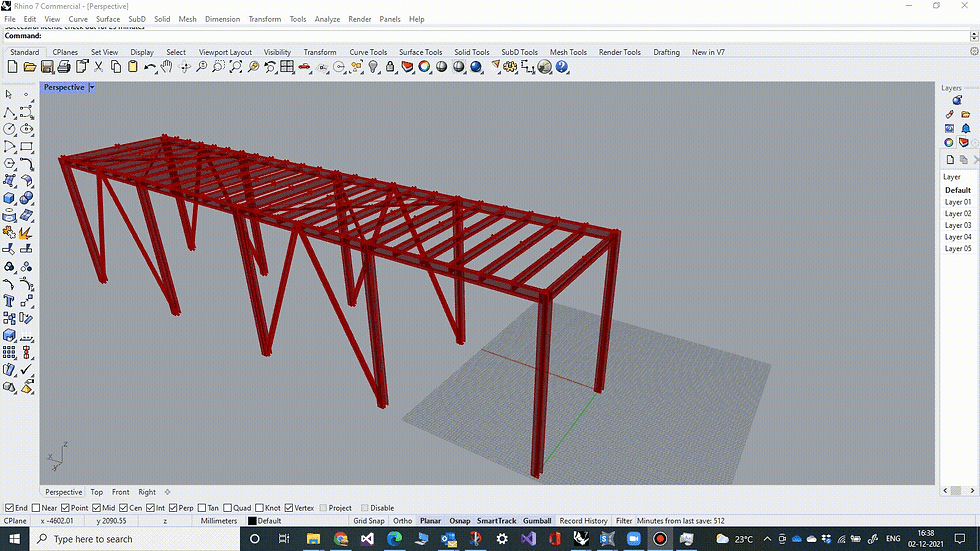Some Structures in heavy industries could be symmetric structures and thus their modelling, analysis & design optimization could be leveraged by making them parametric. And well when one talks about parametric, the next thing that comes to mind is Grasshopper!
So that's what we did. We created a completely parametric steel platform in the grasshopper environment and the results look promising. We plan to use the SAP2000 engine to analyze and design the structure which shall be covered in subsequent blogs.

Some of the benefits which come to mind while modelling such structures parametrically are:
Ability to parameterize important model variables
During the design process, inputs such as length, width and height of the structure might change and that increases its design time and not to mention the possibility of modelling errors seeping in. The GH environment helps one to make these changes almost instantly, provided these variables are identified beforehand and the algorithm laid out accordingly.

Physical Length Modelling
We can't stress more on the need to enable modelling the structural elements to their actual fabrication lengths, and grasshopper lets you do that seamlessly. This helps in extracting accurate lengths of beams and columns and computing important design factors (Ly, Lz, LTB) from the model if required. The only caveat is the analysis engine being used to analyse the structure, should be capable to handle such "continuous" members.
Automation of 'Offset computations'
Beams of varying depths, whose top flanges need to be 'flushed' have to be offset accurately. Although a manual entry is easy, it becomes cumbersome when the sections are repeatedly iterated for optimization. That's where an intelligent algorithm binding the offset depth to profile depths can be put in place to automate its computation.

"Centroidal" Modelling without offsets

Primary Transverse and Longitudinal Beams flushed with column top

Secondary Beams flushed with primary beams
Our analysis engine is powerful enough to compute horizontal offsets during runtime and hence we didn't feel the need to feed them manually.
Parameterizing bracing locations
Bracing (both vertical and plan) locations need careful examination w.r.t to the loading conditions especially for structures like pipe-racks. Parameterizing them gives the user easy control over their desired location as well as opens up options to optimize them using various control points like reactions, forces, displacements etc.

Alter loading algebraically
Quite a few loads (live loads) depend on member spacing. Any change in spacing has an impact on the loading intensity. When a load is tied to the spacing algebraically in the GH environment, one needn't worry about recomputing the intensities, as the spacing changes.

Provision to optimize structural elements based on deflections/ utility ratios
'Galapagos' can be used to iterate through potential column sections based on the drifts/ design utility ratios and that's bound to save a chunk of engineering resources. Similarly, beam central deflections could be used to control the structure as well. This automated optimization using deflections and utility ratios as the controlling factor should bring down computation costs as well as reduce human-centric errors.


Thus, even industrial steel structures can be modelled in the Rhino/GH environment. And one of the main benefits of doing so is decoupling the analysis engine from UI. This saves a lot of time as some analysis and design software tend to be tedious and slow when it comes to modelling complicated structures.
Plugins help in establishing the vital link between Rhino/GH and various Analysis and design software, so one can factor in cost escalation if those plugins are purchased from a third party. But in our opinion, the pros outweigh the cons.
"What if the structure is not parametric?"
Well, no worries, one can just use the Rhino modelling environment and create the UI manually and 'bind' them to GH inputs. Semi-parametric models could also be created by further parameterizing the manually created elements.
Well that's it for today folks! We will continue to share more exciting insights into using Grasshopper for heavy industrial structures.
TM-BL-ST-001

Comments